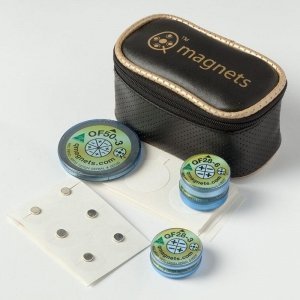There is some good news coming out of the US with regard to the very high use of opioids for pain relief. The first is that the National Institutes of Health (NIH) recently announced US$945M in funding to combat the problem via its NIH HEAL Initiative. HEAL stands for Helping to End Addiction Long term. It is a response to the roughly 50 million adults in the US with chronic pain and the estimated ten million people misusing opioids (whether prescribed or recreational).
The program is looking to support a range of initiatives, from implementing results from scientific research in treating people addicted to opioids, to strategies to prevent addiction.
What is interesting is that NIH will also be looking at novel medication options (multipolar magnets, anyone?) and clinical research in pain management. The NIH acknowledges that a multi-pronged scientific approach is the way to go, and has identified a range of problems that need to be addressed, including…
- that there are different types of pain and different people experience pain in different ways, and that more research is needed in this area to identify “biomarkers, endpoints and signatures of pain conditions”; also that certain types of pain, including back pain and post surgical pain specifically need evidence-based non-addictive treatments
- clinicians ensuring that their patients’ pain is under control and the NIH backing a controlled trial of acupuncture for chronic low back pain
In other recent news, a study conducted by the Boston University School of Public Health, published last month in the British Journal of Medicine found that patients who visited a ‘primary care physician’ (ie GP) for lower back pain were 79% more likely to use prescribed opioids for the pain than those who first visited a chiropractor or 71% more likely to use opioids than those who first visited a physiotherapist.
Data was taken from insurance claim information and the research also revealed that in states where there was unrestricted access to physiotherapists, people were much more likely to see a physio first rather than a primary care physician. Does this mean state-based policy may in some cases be driving the opioid crisis?
More information
NIH funds $945 million in research to tackle the national opioid crisis through NIH HEAL Initiative
Team finds physical therapy access may reduce opioid prescriptions







